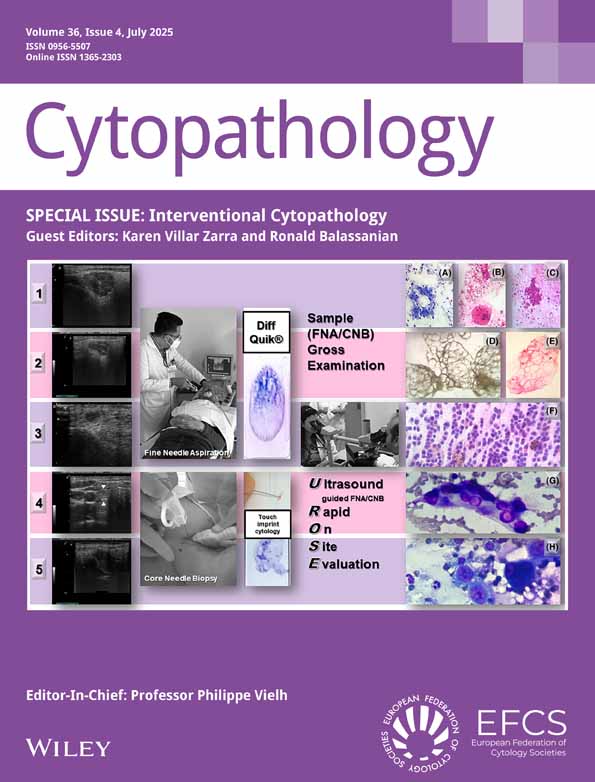Fine Needle Aspiration of Palpable Breast Lumps: A 1-Year Audit Using the Cytospin Method
Abstract
A Fine-needle aspiration (FNA) service for the diagnosis of palpable breast lumps was started at the Royal Preston Hospital, Preston, UK, in November 1989. Over the subsequent year, 407 FNAs were taken from 393 women. A simple technique was used which involved the surgeon flushing the aspirate into 10ml of Cytospin collection fluid; cytocentrifuge preparations were then safely and conveniently prepared in the laboratory. Slides were stained with Papanicolaou and H&E. the method detected 112 out of a total of 121 cancers (92.6%); of the nine that were undetected, five aspirates were inadequate and four were falsely reported as negative. There were no false positives. the overall inadequate rate was 11.0%. Excluding inadequate samples, the absolute sensitivity was 89.7% and complete sensitivity 96.6% with 94.4% specificity. This 1-year audit has shown the Cytospin method of FNA in palpable breast disease to have a favourable sensitivity and specificity, and therefore to be an alternative to conventional FNA using direct smears.




